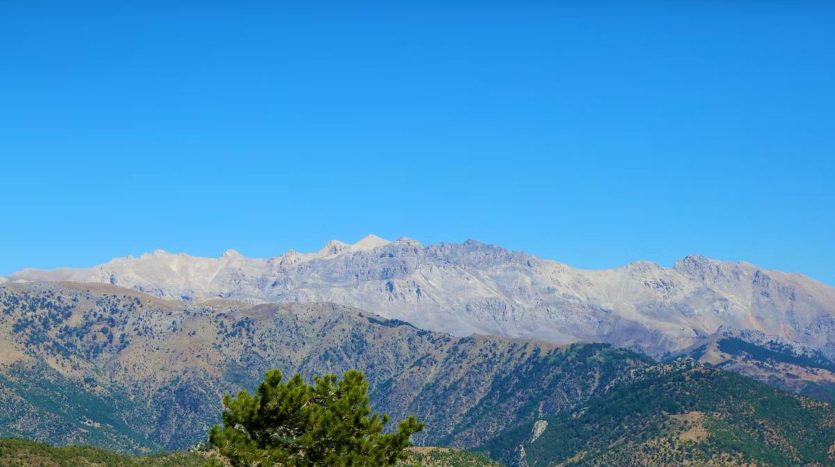Apart from all the amazing bays and sea-view properties in Turkey, the country is counted among the top countries with high altitude mountains it has, and the area they cover (1132 meters). While the mountains in Turkey extend as mountain ranges in the northern and southern regions, when we come to the Eastern Anatolia region, we see that the mountains are closer to each other and their heights increase. The mountains were formed on the east-west axis as a result of the compression of the Siberian plates from the north and the Arabian plates from the south.
Two groups of Mountains in Turkey according to their formation:
- Mountains Formed by Orogeny
- Mountains Formed by Volcanism
Mountains Formed by Orogeny
Orogeny means mountain formation. Sediments accumulate between plates over millions of years. Mountains are formed as a result of the convergence of the plates. While the hard masses form the Fracture Mountains, the soft masses form the Fold Mountains.
Volcanic Mountains
Volcanic mountains were formed by the cooling of molten, hot and pressurized magma in the depths of the earth through the weak points of the earth’s crust. In in Turkey, the end of the 3rd time and the beginning of the 4th time were periods when volcanic activities were intense.
Different sorts of mountains in Turkey:
Broken Mountains
As a result of orogeny, the hard layers that lose their folding feature break and form faults. The elevations (mountains) on the fault (fracture) are called “Horst” and the descending areas (plains) are called “Graben”.
Cracked Mountains in Aegean Region
Menteşe Mountains, Kaz Mountains, Bozdağlar, Madra Mountains, Aydın Mountains, Yunt Mountains
Cracked Mountains in the Mediterranean Region
Nur Mountains
B- Fold (Curvy) Mountains Geosynclinals are exposed to high pressure as a result of the displacement of the continents. If it has a flexible structure, they bend and fold (curvy) mountains are formed. If these folds are in dome structure, they are called “anticlinal”. If it is in the shape of a pit, it is called a “syncline”.
All the Curvy Mountains in Turkey
*Marmara Region Curvy Mountains:
Koru Mountains, Samanlı Mountains, Yıldız Mountains
*Black Sea Region Curvy Mountains:
Canik Mountains, Köroğlu Mountains, Rize Mountains, Mescit Mountains, Kaçkar Mountains, Küre Mountains, Ilgaz Mountains
*Curved Mountains of Central Anatolia Region:
Hınzir Mountains, Tecer Mountains, Sündiken Mountains, Akdağ, Sivrihisar Mountains
*Curved Mountains of Eastern Anatolia Region:
Palandöken, Maden Mountains, Karasu–Aras Mountains, Cilo Mountains, Mengene Mountains, Allahuekber Mountains, Hakkari Mountains, Malatya Mountains, Mercan (Munzur) Mountains
*Mediterranean Region Curvy Mountains:
Aladaglar, Geyik Mountains, Sultan Mountains, Bolkar Mountains, Barla Mountains
*Aegean Region Curvy Mountains:
Emir Mountains, Simav Mountains, Murat Mountains, Eğrigöz Mountains
*South East Anatolian Region Curvy Mountains:
Mardin Mountains
Other Mountain regions in Turkey
Central Anatolia Region Volcanic Mountains:
Melendiz Mountain, Karacadağ, Karadağ, Erciyes Mountain, Hasandağı
Eastern Anatolia Region Volcanic Mountains:
Nemrut, Süphan, Tendürek, Ağrı
Aegean Region Volcanic Mountains:
Manisa-Kula Volcanoes
Marmara Region Volcanic Mountains:
Uludag
Mediterranean Region Volcanic Mountains:
Hatay-Hassa
Southeast Anatolia Region Volcanic Mountains:
Karacadağ
Turkey’s Highest Mountains Sorted List:
- Mount Ararat (Ağrı) – 5137 meters – Eastern Anatolia Region
- Cilo Mountain (Hakkari) – 4170 meters – Eastern Anatolia Region
- Mount Süphan (Bitlis) – 4049 meters – Eastern Anatolia Region
- Kaçkar Mountain (Rize) – 3932 meters – Black Sea Region
- Erciyes Mountain (Kayseri) – 3916 meters – Central Anatolia Region
- Little Ararat Mountain (Ağrı) – 3896 meters – Eastern Anatolia Region
- Kızılkaya Mountain (Niğde) – 3767 meters – Central Anatolia Region
- Demirkazık Mountain (Niğde) – 3756 meters – Central Anatolia Region
- Artos Mountain (Van) – 3550 meters – Eastern Anatolia Region
- Mercan Mountain (Erzincan) – 3549 meters – Eastern Anatolia Region
- Aydos Mountain (Konya) – 3430 meters – Central Anatolia Region
- Medetsiz Mountain (Adana) – 3524 meters – Mediterranean Region
- Kösedağ (Ağrı) – 3340 meters – Eastern Anatolia Region
- Hasan Mountain (Aksaray) – 3268 meters – Central Anatolia Region
- Kısır Mountain (Kars) – 3200 meters – Eastern Anatolia Region
- Palandoken Mountain (Erzurum) – 3176 meters – Eastern Anatolia Region
- Berit Mountain (Kahramanmaraş) – 3054 meters – Mediterranean Region
- Nurhak Mountain (Kahramanmaraş) – 3000 meters – Mediterranean Region

